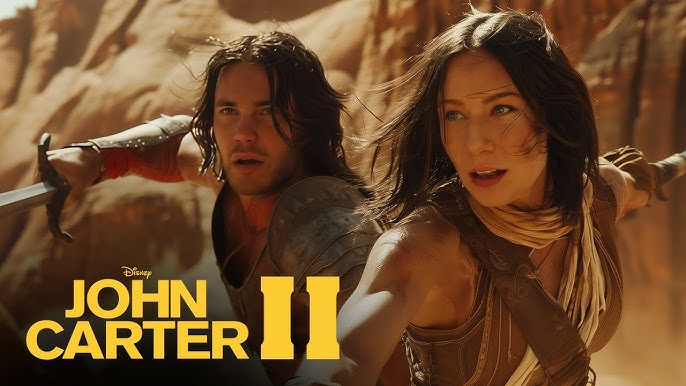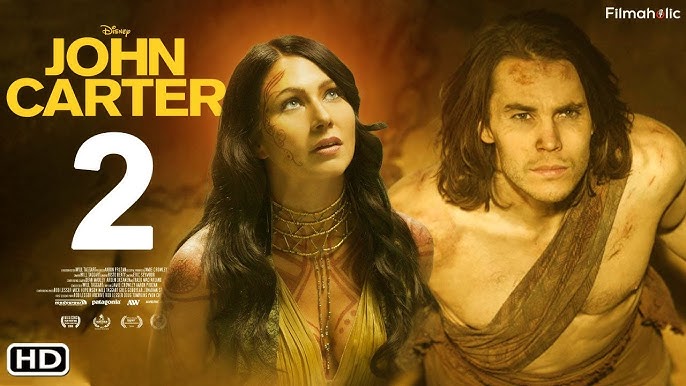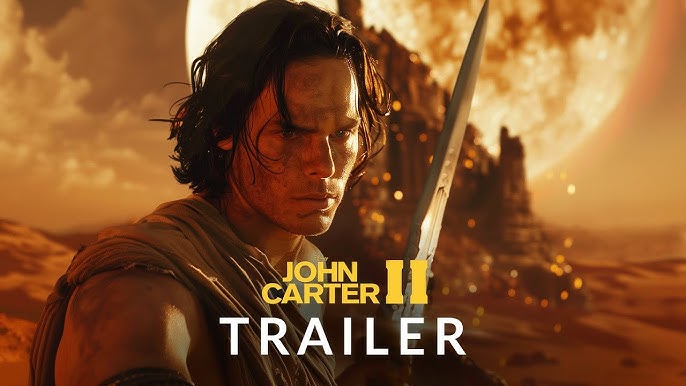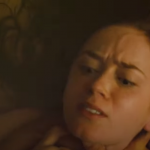John Carter 2 (2026) – Return to Barsoom

Some worlds fade into memory, but legends have a way of clawing back into the light. John Carter 2 (2026) resurrects the pulp adventure of Edgar Rice Burroughs’ timeless saga, returning audiences to the red sands of Barsoom—a planet of warring tribes, lost empires, and a hero caught between two worlds. Where the first film was an introduction, this sequel becomes a reckoning.
The story begins with John Carter back on Earth, restless and haunted by the life he left behind. His heart still belongs to Dejah Thoris and the kingdom of Helium, yet duty binds him to a world that no longer feels like home. But when a mysterious artifact awakens, Carter is pulled once again across the void to Barsoom—only to discover that the world he fought to protect now teeters on the brink of annihilation.
Barsoom itself has changed. Scarred by war, fractured by betrayal, its people no longer trust easily. The fragile alliance between Helium and its rivals is crumbling, and a new enemy emerges from the planet’s forgotten past: an ancient race whose power threatens to eclipse even the Therns. Carter must fight not only for Dejah and her kingdom, but for the survival of the entire planet.
The action is breathtaking. From colossal airship battles above crimson skies to brutal gladiatorial combat in the shadow of Martian ruins, every set piece is larger, sharper, and more ferocious than before. Carter, with his impossible leaps and relentless determination, remains at the heart of every fight, a warrior whose humanity makes him both vulnerable and unbreakable.
But the sequel does not live on spectacle alone. It deepens the emotional stakes, exploring Carter’s dual identity: Earth-born soldier and Barsoom’s reluctant savior. He struggles with belonging—too alien for one world, too human for the other. This tension drives the story, giving weight to every choice, every sacrifice.
Dejah Thoris stands as more than a princess; she is strategist, leader, and equal partner. Her relationship with Carter carries both fire and fragility, reminding us that love, even across worlds, is never simple. Their bond becomes the emotional compass of the film, grounding the chaos in something intimate and human.
Visually, John Carter 2 embraces the otherworldly grandeur of Barsoom. Expansive deserts ripple under alien suns, cities rise like jewels from the sand, and ancient temples glow with forgotten energy. Each frame feels painted with myth, a reminder that Barsoom is not just a setting but a character in itself.
Supporting characters—fierce Tharks, rival warlords, cunning betrayers—add texture to the narrative. The hybrid loyalties and fragile alliances of Barsoom’s tribes form the political backdrop against which Carter must fight, forcing him to become not just a warrior, but a leader.
The score swells with orchestral might, interwoven with tribal rhythms and haunting alien tones. It amplifies both the sweeping adventure and the intimate moments of loss, carrying us across worlds through sound as much as through sight.

Thematically, the film asks whether one man can bridge civilizations. Is Carter a savior, or merely another conqueror rewriting Barsoom in his image? It challenges the myth of the lone hero, suggesting that survival may depend not on strength alone, but on trust, unity, and sacrifice.
By its finale, John Carter 2 delivers both triumph and heartbreak. Battles are won, but at staggering cost. The legend of John Carter grows, yet so do the questions that haunt him. He may save Barsoom, but the price of belonging to two worlds may be more than even he can bear.
Ultimately, John Carter 2 (2026) is not just an adventure—it is a return to myth. Bigger, darker, and more emotionally resonant than its predecessor, it is a story of love, loyalty, and the endless pull of destiny across the stars.
Related movies :
Related movies :
Related movies :
Related movies :
Related movies :
Related movies :
Related movies :











